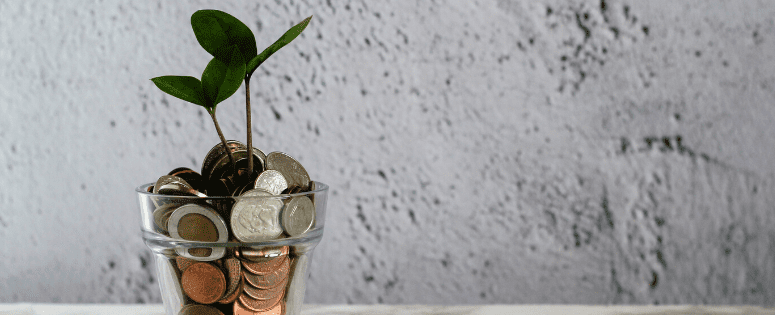Community Building: Dollars and Cents

One of the challenges I face in my mission to spread Community consciousness around the globe is that in order to sell the services and programs which enable me to do this, I often have to express the outcomes in financial terms.
I can do that.
I just feel that does a disservice to the very essence of Community building, much like justifying the institution of marriage by pointing out that tax breaks come with it.
I realize that in business there needs to be a return on investment. And there is in Community building, a great number of returns. But there is so much more value in Community building than just the financial shifts.
Still; let’s explore the dollars and cents of Community building.
Community Building Makes Dollars
Essentially, there are two financial compensations of transforming your work culture into a Community culture.
- Talent Retention. Consider the cost of replacing an employee – the headhunter, the recruiting, the interviewing, the hiring, not to mention the training and all that lost productivity while this is happening. Some estimates are that the cost is at least six to nine months salary of the worker. Others have told me it costs between 100,000.00 and 150,000.00 to replace a worker. That’s a lot of dollars.
- Supporting Mental Health. Community building creates a culture of psychological safety. This is a dynamic where leaders are allies and people can share their stories. This Harvard Business Review article lays it out nicely. The World Health Organization estimates that loss of productivity due to mental health issues costs the global economy one trillion dollars annually.
How does building a Community culture achieve these money-saving objectives? Three ways:
- Community building is relationship building. This is the foundation of any collaboration. If you explore the problems you may be having or have had at work, chances are, they will lead you back to this foundation.
- Community building creates a happy workplace. Think about it; you spend about half your waking hours at work. Don’t you want to be happy there? Don’t you want your employees to be happy there?
- Community building creates a special kind of engagement. This you have to see for yourself. I could share many examples of engagement that I’ve witnessed in my community-building programs. But I really want to move on to the cents part.
Community Building Makes Cents – er – Sense
People who have Communities in their lives do not feel lonely, disconnected, peripheral, or anxious as they travel life’s journey because they do not travel alone. They enjoy camaraderie and support. They celebrate diversity, inclusivity, and belonging. They thrive in an environment of committed individuals who care about the group. They get to be authentic and to feel accepted for exactly who they are. They belong.
I named my first book The Happy Place. It is a book that helps an individual deal with the painful vestiges of childhood issues. I named my second book Sounding the Drum: Community Building in the Digital Age, as a way of honouring Scott Peck’s work in The Different Drum. I could have as easily named it The Universal Happy Place because healing and thriving happen within the compassionate circle of a Community.
That Makes Not Only Makes Sense, it Makes Dollars Too
What most recommends the action you take to build a Community culture is the fact that it makes people happy.
This empowers the members of your organization to have a profound impact on the world.
Photo by Micheile Henderson on Unsplash





 Welcome to Life, for instance!
Welcome to Life, for instance! “Lori shares plenty of feet-on-the-ground advice and techniques for forming and fostering community... The newcomer to community building will get a solid foundation, and the experienced community builder will find a useful framework as well as some new tools for the toolbox.”
“Lori shares plenty of feet-on-the-ground advice and techniques for forming and fostering community... The newcomer to community building will get a solid foundation, and the experienced community builder will find a useful framework as well as some new tools for the toolbox.” "Lori has put together a real
page turner of a book. With
great humility Lori has woven
together a very insightful
personal story of transformation...
and in the process has put
together a doable set of steps
that anyone can do and
follow to their own happy place."
"Lori has put together a real
page turner of a book. With
great humility Lori has woven
together a very insightful
personal story of transformation...
and in the process has put
together a doable set of steps
that anyone can do and
follow to their own happy place."






